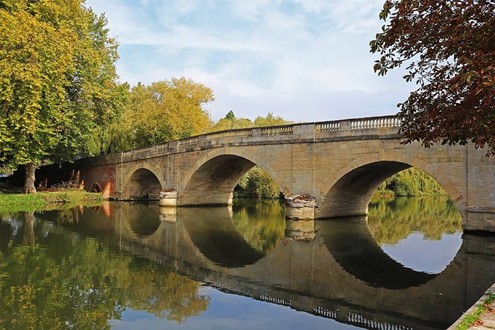
The current bridge was built in 1827 and given Grade II* status on 9th April 1952.
It is a road bridge, carrying an unclassified road (formerly the A329) across the river on the reach above Benson Lock, with Shillingford to the North and Wallingford to the South. Originally the south side was in Berkshire but with changes in county boundaries in 1974, it is solely in Oxfordshire.
The bridge is now single track and is controlled by traffic lights.
‘Shillingford Bridge occupies a romantic position, which strikes the eye more strongly from being unlike the rest of the country, which bears an open and dreary aspect.‘
The Beauties of England and Wales 1813
Early records indicate the presence of a bridge on the site in the 14th century and this is borne out by the Patent Rolls of 1301 where the Earl of Cornwall is recorded as leasing a fishery “downstream of Shillingford Bridge” and in 1370 a bridge at Shillingford is mentioned again as a boundary of another fishery. The structure was short-lived and had almost certainly been dismantled by 1379 when Shillingford Ferry was granted for life to Roger Hurst, Porter of Wallingford Castle. The ferry remained as a perquisite of the castle’s porters until 1530 when it was leased to Roger Hacheman for 33s 4d per annum. Hacheman also leased a small dwelling on what was then the Berkshire bank in 1545, the dwelling, rebuilt and expanded several times, was known as the Swan Inn by 1608 and is now the Shillingford Bridge Hotel.
There is no doubt that the earlier bridge did exist as Gough’s Camden (1789) records that piles and beams were dredged up at the site of Shillingford Ferry.
In 1749 William Blackstone became Recorder of Wallingford. He was a lawyer and frequently used the ferry to travel between Wallingford and Oxford but in times of flood and strong stream he was forced to take a longer route via Wallingford Bridge. Blackstone decided that a bridge was necessary and in November 1763 under his leadership the local gentry petitioned Parliament which led to the Shillingford Roads and Bridge ASct 1764 for repairing and widening the Road from Shillingford in the County of Oxford, through Wallingford and described the ferry as “dangerous for persons to pass in times of flood”. The act created the Shillingford to Reading Turnpike Trust, with powers to improve and maintain the existing road and to take responsibility for building the new bridge.
Work on the bridge did not begin until 1766 when stone foundations, piers and abutments were built supporting a wooden trestle road bed. Completion of the bridge was announced in the Reading Mercury in April 1767. Jackson’s Oxford Journal gives the precise opening date as 25 April 1767. The turnpike trust took a loan of £7,700 (equivalent to £1,6m today) which covered both the cost of purchasing the ferry rights and the construction of the bridge.
Two images of the wooden 1767 bridge
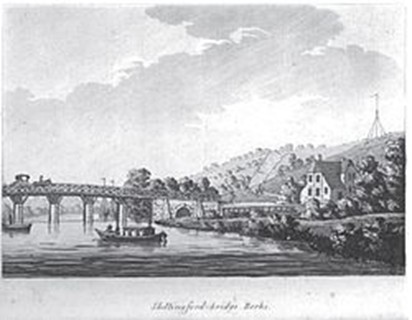

The 1767 bridge captured by Samuel Ireland in 1791
Shillingford Bridge – J M W Turner 1805
By 1826 the old bridge was in poor repair and the trustees placed an advertisement announcing the wooden structure would be closed starting 10 May 1826 and a ferry provided whilst a new stone bridge was being built. The act of Parliament renewing the trustees’ powers, received royal assent on 2 April 1827 and described the old bridge as “ruinous” and “in part taken down” and the new one “nearly completed”. The act also contains one of the earliest mentions of the convention of driving on the left in the United Kingdom laying down a fine of 20-40 shillings (equivalent to £2500-£5000 today) for “any person who shall not keep his carriage on the left hand side of the road”.
A few months later on 18 June 1827 the Reading Mercury noted that “the Substantial Stone Bridge over the River Thames at Shillingford has for a long time been sufficiently complete for the passage of travellers and their carriages and it will very shortly be finished in all its ornamental parts” The new bridge was entirely made of stone with three semi-circular river spans, the middle one 52 feet (16 m) wide and the flanking pair 36 feet (11 m) each. On the Oxfordshire (north) bank was a small tow-path arch and a 300 feet (91 m) causeway. The toll-keeper’s cottage was located on the downstream side of the Oxfordshire bank.
In 1852 the trustees’ powers were renewed by the Shillingford, Wallingford and Reading Road Act 1852 which also allowed for additional tolls for vehicles “drawn by steam or machinery”. Twenty years later, the Annual Turnpike Acts Continuance Act 1872 was passed allowing the trustees and owners of turnpikes and toll-bridges to surrender their rights to the local highway authority. From midnight on 1 November 1874 tolls were permanently lifted.
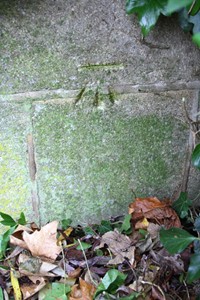
20th century benchmark on Shillingford Bridge by Roger Templeman
licensed for reuse under the Creative Commons Attribution-ShareAlike 2.0 license.
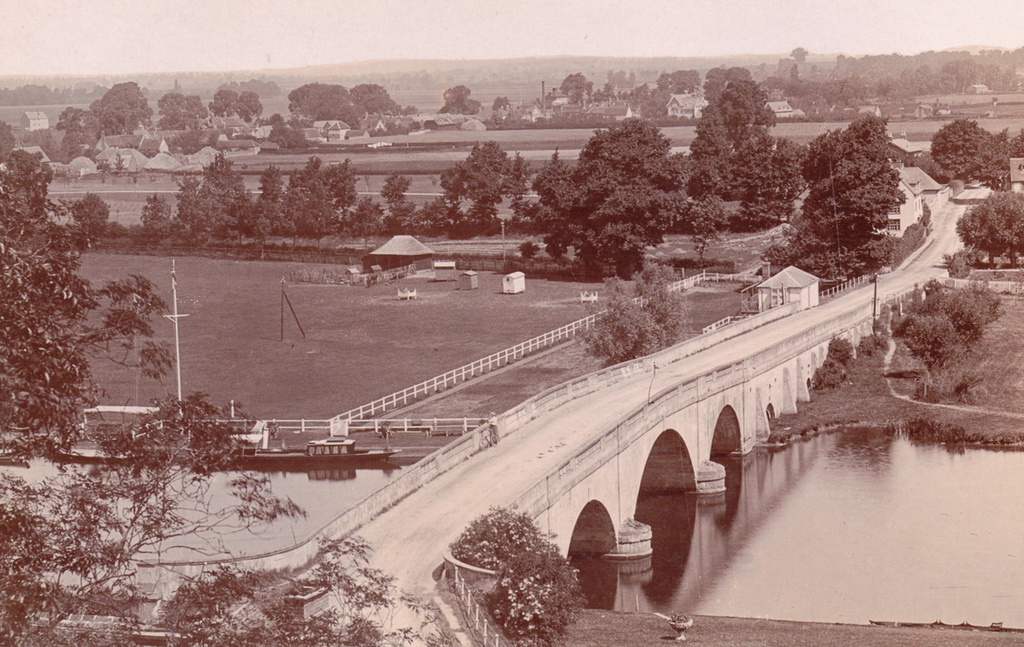
Other than the demolition of the toll-keeper’s cottage in 1937, the appearance of the bridge remains as when it was built.
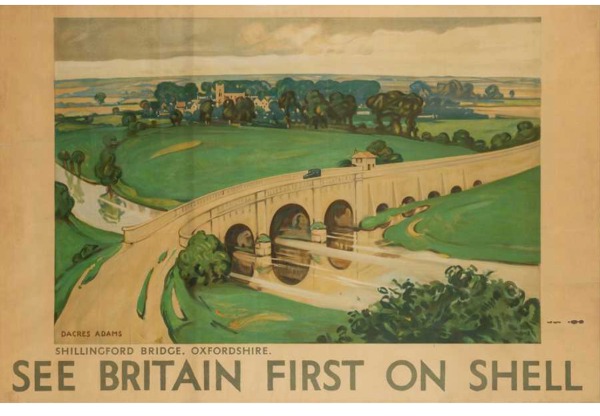
Lithograph by William Dacres Adams